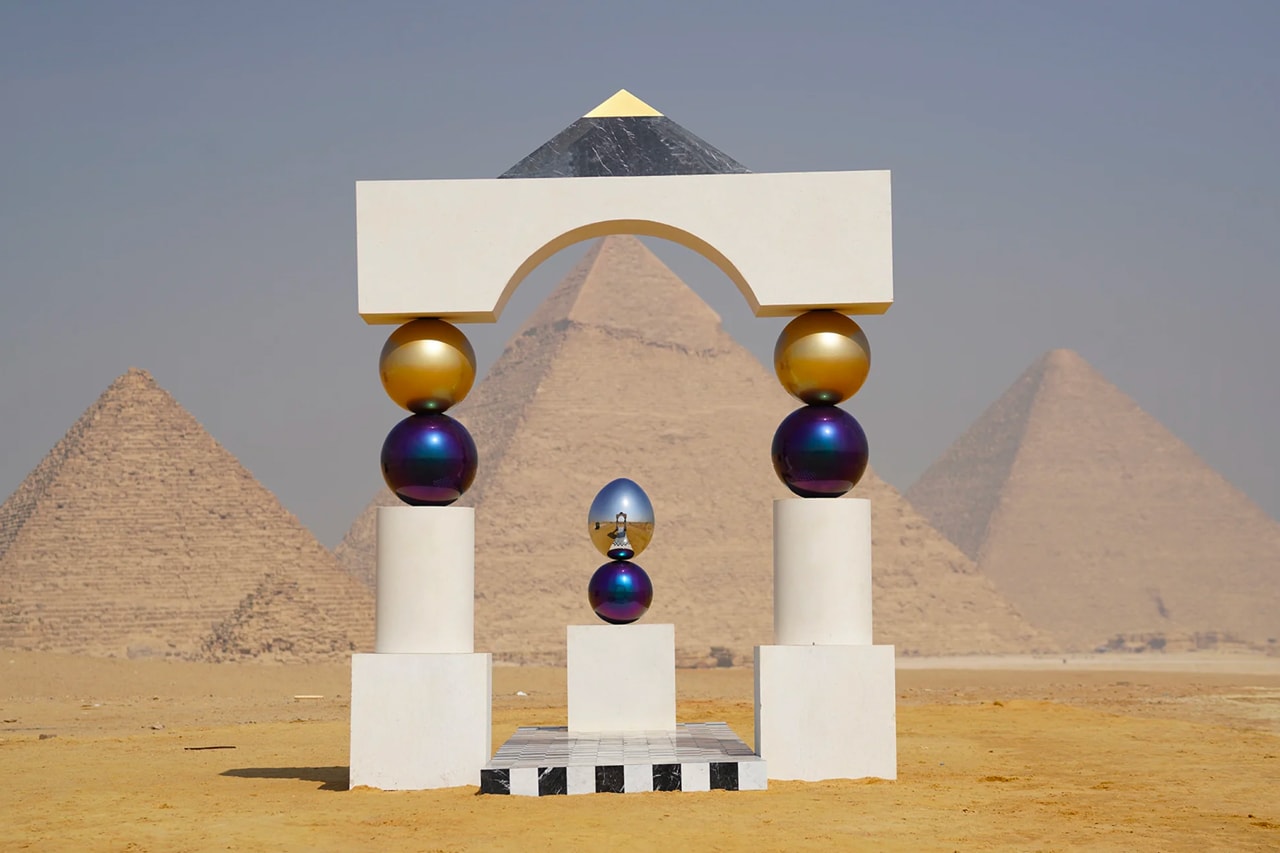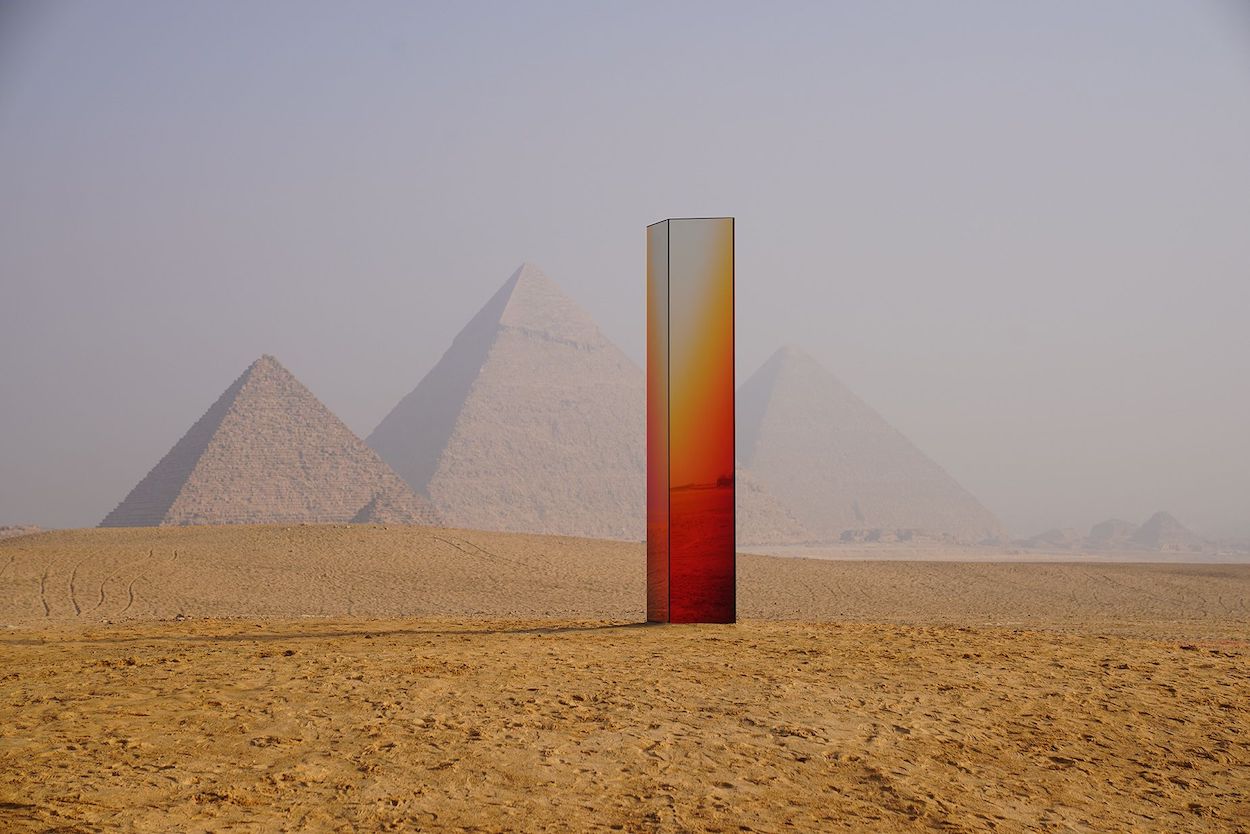The Pyramids of Giza are tall, mighty, and mysterious, emblems of our technological prowess and limitless ambition during ancient times. Though they’ve been studied exhaustively and are the subject of countless bodies of work, French-Egyptian curator Nadine Abdel Ghaffar found herself fascinated by the prospect of the pyramids backdropping blue-chip sculpture to show how they’ve influenced today’s creative talents who can present them in a new light. That led her to found the Cairo-based arts firm Art d’Egypte in 2016 with the goal of mounting an outdoor exhibition of large-scale works around the pyramids. The first edition launched in 2021—convincing wary archaeologists wasn’t easy—and attracted more than one million visitors to the UNESCO World Heritage Site.
This year’s edition, “Forever Is Now III,” is the largest yet, bringing 14 site-specific installations crafted around the theme of “play” that respond to the monuments with verve and whimsy. Argentine artist Pilar Zeta created Mirror Gate, an enigmatic limestone portal topped with a pyramidal apex beckoning viewers to walk down a checkered pathway to a giant egg perched on a plinth. It wouldn’t look out of place on a surrealist film set. Dutch material whiz Sabine Marcelis recast the sundial—an invention originating in ancient Egypt—through her own lens, yielding a glass rectilinear monolith embedded with solar cells that provide a light source after dark. Greek sculptor Costas Varotsos lined up a series of metal circles and filled them halfway with liquid, making the pyramids appear to float on water when viewed from afar.


